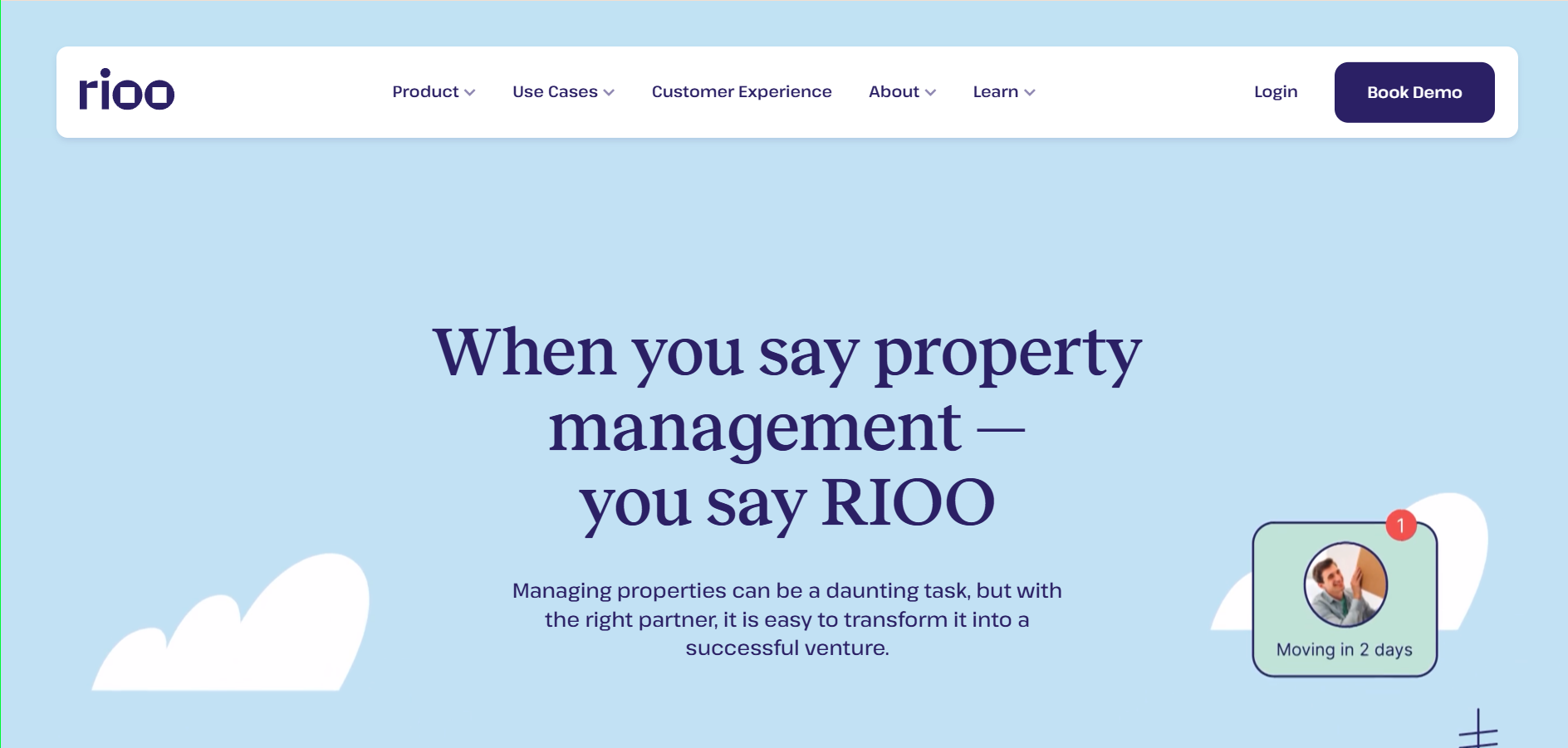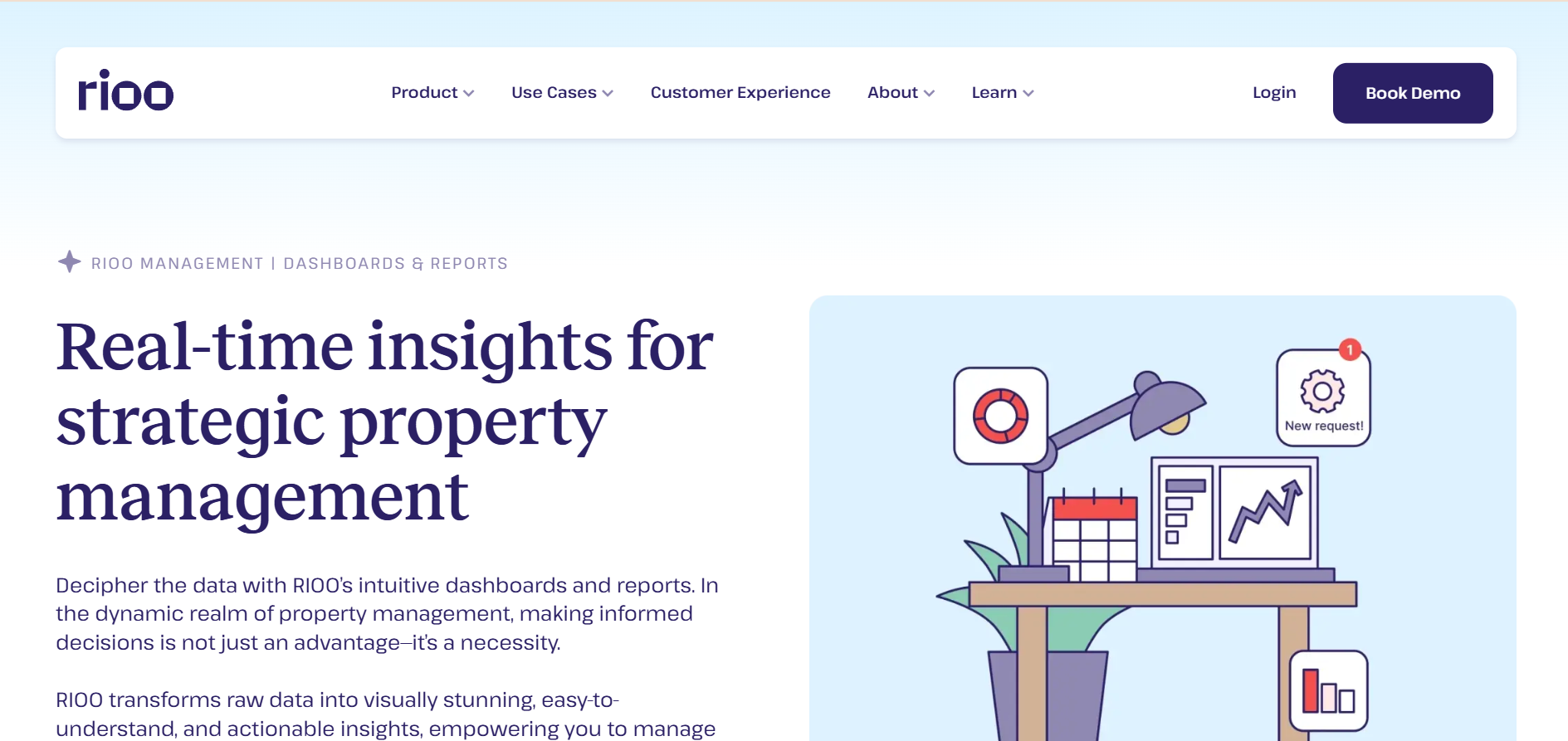Turning your home into a rental property can be a smart way to earn passive income, build equity, and make better use of your space.
As of 2024, approximately 45.5 million units in single-family or multifamily homes were occupied by renters, representing more than one-third of the total housing stock in the U.S. This highlights just how common and valuable rental properties have become.
If you're wondering how to turn your home into a rental, you're not alone; many property owners, real estate professionals, and property managers are exploring this option in today’s market.
In this blog, you'll learn what a rental property is, why converting your home makes sense, and how to do it with simple, practical steps.
TL;DR
-
A rental property is a home you lease to tenants to generate steady monthly income while building long-term value.
-
Converting your home into a rental can help you earn passive income, especially if you're relocating or not using the space.
-
10 effective ways to turn your home into a rental include checking mortgage terms, switching to landlord insurance, understanding local laws, prepping the property, setting the right rent, creating a lease, and organizing your finances.
-
Tools like RIOO can simplify leasing, pricing, listing, and tenant communication, saving you time and helping reduce costly mistakes.
What is a Rental Property?
A rental property is any home or unit that you lease to tenants in exchange for regular rent payments. It can be a single-family house, apartment, condo, or even a portion of your primary residence.
As the property owner, you're responsible for maintaining the space while allowing others to live in it under a rental agreement.
Whether it’s for short-term or long-term use, the property must meet safety and legal standards required by local housing laws. Knowing exactly what defines a rental property helps you stay compliant and make informed decisions before starting the rental process.
Now that you understand what a rental property is, let’s walk through the key steps to successfully convert your home into one, without missing any important details.
12 Effective Steps to Convert Your Home into a Rental Property
Converting your home into a rental property is a smart move if you want to earn passive income, hold on to long-term assets, or step into real estate investment. But this process requires more than just finding a tenant. You need to follow a step-by-step plan to ensure you're fully legal, financially protected, and ready to operate like a responsible landlord.
Step 1: Review Your Mortgage Terms Carefully
Before anything else, check what your mortgage allows. Most home loans are designed for owner-occupied properties, not rentals. If your loan is still within its initial occupancy period, renting it out may violate your mortgage agreement.
What to do:
-
Call your lender or review your mortgage documents to see if renting is permitted.
-
If it’s not, ask about refinancing options to convert your loan into an investment property mortgage, which typically comes with different interest rates, down payment requirements, and insurance rules.
Why it’s important:
-
Ignoring this step can result in loan default, insurance claim denial, or foreclosure. You want your rental to be a legitimate asset, not a legal liability.
Step 2: Upgrade Your Insurance to a Landlord Policy
Your current homeowners' insurance covers you while you live in the property. Once a tenant moves in, your risk profile changes, and your coverage needs to as well.
What to do:
-
Contact your insurer and switch to landlord insurance (dwelling policy DP-3).
-
Make sure your policy covers:
-
Property damage caused by tenants or natural disasters.
-
Liability if a tenant or visitor gets injured on the property.
-
Loss of rental income if the home becomes unlivable due to a covered event.
-
Extra tip:
-
If you're renting the home fully or partially furnished, add personal property coverage to protect items like appliances, window units, or furniture.
Must Read: Rental Verification 101: What It Is and How to Do It Right?
Step 3: Understand Local Laws, Regulations, and HOA Rules
Renting out a home comes with legal responsibilities that vary depending on where the property is located. Not following local laws can result in fines, tenant disputes, or court battles.
What to research:
-
City and county ordinances (rental registration, permit requirements, occupancy limits).
-
State landlord-tenant laws (security deposit rules, eviction processes, notice periods).
-
Building codes (smoke detectors, handrails, plumbing/electrical safety).
-
HOA rules if your property is in a homeowners association, some restrict or prohibit rentals entirely.
Why it’s important:
-
Many cities now have tighter controls over short-term or long-term rentals due to rising demand. Operating legally protects your rights as a landlord and ensures tenant safety.
Step 4: Prepare Your Home to Be Move-In Ready
First impressions matter. A clean, well-maintained home not only attracts more tenants, it allows you to charge a competitive rent and reduces turnover. Tenants want to see that you care for the space, which often leads to better care from them in return.
Steps to follow:
-
Remove all personal items (especially valuables, family photos, and keepsakes).
-
Deep clean every room, including behind appliances and inside closets.
-
Inspect and repair plumbing, electrical, doors, windows, and locks.
-
Make small upgrades:
-
Apply fresh paint in neutral tones.
-
Replace worn-out hardware and light fixtures.
-
Fix cracked tiles or outdated cabinet handles.
-
-
Consider professional staging or photos for listing purposes.
Why this matters
-
A home in excellent condition rents faster, stays occupied longer, and often attracts more responsible tenants.
Step 5: Set the Right Rental Price Based on Market Research
Setting the rent is a balancing act. The price is too high, and your property could sit empty. The price is too low, and you’re leaving money on the table every month.
How to find the right number:
-
Research similar listings in your neighborhood (size, age, features, amenities).
-
Consider upgrades, location perks (near schools, transit, parks), and seasonal demand.
-
Factor in your monthly expenses, including mortgage, taxes, insurance, and maintenance.
Make smarter pricing decisions with RIOO’s easy-to-use pricing strategies. It helps you stay competitive, avoid long vacancies, and set rent that matches market demand. With RIOO, you can confidently price your property based on real trends, without the guesswork.
Step 6: Create a Legally Sound Lease Agreement
A lease is your most important document as a landlord. It defines the relationship between you and your tenant, sets expectations, and gives you legal protection if problems arise.
Key elements to include:
-
Rent amount, payment due date, and late fees.
-
Lease term (fixed-term or month-to-month).
-
Security deposit amount, holding process, and return conditions.
-
Maintenance responsibilities (who handles what, and how requests should be made).
-
Rules on pets, smoking, guests, parking, and noise.
-
Procedures for renewal, termination, and eviction.
Tip:
-
Avoid using generic online templates. Use lease forms that follow your state-specific landlord-tenant laws, and have a legal expert review your final lease.
Simplify your leasing process with RIOO’s all-in-one lease management feature. From handling applications to digital lease signing, RIOO helps you stay organized, save time, and offer tenants a seamless, professional experience. It's built to adapt to your property’s unique needs, making lease management easier and more precise.
Must Read: What Property Owners Expect From Leasing Managers During Transitions
Step 7: Notify Your Mortgage Lender of the Change
Even if your mortgage allows rentals, many lenders still require formal notification when your home switches from primary residence to rental.
Why it matters:
-
Failing to disclose this change could result in violations of your mortgage terms, which might impact refinancing opportunities or lead to insurance claim issues.
Best practice:
-
Send a written notice to your lender and request confirmation in writing. Keep this in your records.
Step 8: Separate Your Rental Finances
Mixing personal and rental income can cause serious accounting problems, especially at tax time.
What to do:
-
Open a dedicated bank account for rental income and property-related expenses.
-
Set up a system to track every transaction, including rent, repairs, utilities, and management costs.
-
Stay on top of your rental finances with RIOO’s real-time dashboards and reporting tools. RIOO turns your property data into clear, actionable insights, helping you make smarter decisions, spot trends early, and manage more strategically without getting lost in the numbers.
Why this helps:
-
Keeping rental finances organized not only simplifies taxes but also gives you a clear picture of how your investment is performing month to month.
Step 9: Understand the Tax Implications of Rental Income
Once your home becomes a rental, the IRS considers any income you earn as taxable. However, you also gain access to valuable deductions.
What you can deduct:
-
Mortgage interest.
-
Property taxes and insurance premiums.
-
Maintenance and repair costs.
-
Property management fees.
-
Utilities (if paid by you).
Why do you need a tax professional?
-
Real estate tax rules are complex. A qualified CPA can help you maximize deductions, avoid underreporting, and stay compliant with both federal and state laws.
Step 10: Use Property Management Software or Hire Help
Managing a rental property means handling listings, rent collection, maintenance requests, lease renewals, and tenant communication, all while staying compliant. Doing it manually can quickly become overwhelming, especially if you’re juggling multiple units or properties.
What to do:
-
Use a reliable property management platform to simplify and streamline your day-to-day tasks. These tools help you stay organized, improve response times, and give tenants a smoother experience.
-
Make your properties stand out with RIOO. It lets you showcase listings using high-quality images and virtual tours, helping potential tenants view your space anytime, from anywhere. RIOO also integrates with top platforms like Zillow and Trulia, boosting your visibility. Plus, you get access to features like:
-
Property & Community Setup: Centralize all property data in one place.
-
Units, Rooms & Amenities: Organize every space for easier management.
-
Pricing Strategies: Use data-driven tools to price accurately and stay competitive.
-
Workflow & Customizations: Simplify complex tasks with custom flows.
-
Dashboards & Reports: Turn data into clear insights.
-
Unified Customer View: Track tenant interactions and build stronger relationships.
Step 11: Screen Tenants Thoroughly
Your tenant is the biggest factor in whether your rental experience is positive or stressful. Screening protects you from lost rent, property damage, or legal disputes.
What to check:
-
Credit score and payment history.
-
Employment status and income (aim for income 3x monthly rent).
-
Criminal background check (where legally permitted).
-
Rental history and references from past landlords.
Important:
-
Always follow Fair Housing laws, never reject applicants based on race, gender, religion, disability, or family status.
Must Read: 10 Ways to Streamline Move-Ins and Move-Outs in Rental Properties
Step 12: Build an Emergency Fund for Rental Expenses
Even with careful planning, things can go wrong, like a broken water heater or a vacancy between tenants.
How much to set aside:
-
Keep at least three to six months of property-related expenses in a separate emergency fund.
What it covers:
-
Major repairs (HVAC, plumbing, roofing).
-
Legal costs (evictions, lease violations).
-
Vacancy periods with no rental income.
Why this matters:
-
Having reserves protects your cash flow and helps avoid stress when unexpected costs arise.
Conclusion
Turning your home into a rental can be a smart way to generate steady income and build long-term wealth, but it takes planning, precision, and the right tools.
From checking mortgage terms to preparing your property and staying compliant with local laws, each step matters. If you're serious about learning how to turn your home into a rental, now is the time to take action.
To make the process easier and more efficient, try RIOO. With features that simplify leasing, pricing, property listing, and tenant communication, RIOO helps property owners, real estate professionals, and managers stay ahead, without the stress.
Whether you’re renting out one unit or managing multiple properties, RIOO gives you the control and clarity you need.
Ready to streamline your rental journey? Book a demo with RIOO!
Frequently Asked Questions (FAQs)
-
Who should think about turning their home into a rental property?
If you’re a homeowner, real estate agent, or property manager looking for extra income, relocating, or planning for long-term financial growth, renting out your home could be a smart choice.
-
How do you figure out depreciation for a rental property?
Depreciation is calculated using the lower value between what you paid for the home or its market value when you turned it into a rental. Keep in mind, you can only depreciate the building, not the land.
-
What’s the best way to prepare your home for tenants?
Start by fixing anything that’s broken and making sure the property is safe and up to code. Give it a deep clean, consider simple upgrades like fresh paint or new hardware, and take photos to document its condition before move-in.
-
Should you manage the rental yourself or hire someone?
That depends on your time and comfort level. Doing it yourself saves money but takes effort. A property manager can handle everything for you but charges a fee. Choose the option that fits your schedule and experience.


















